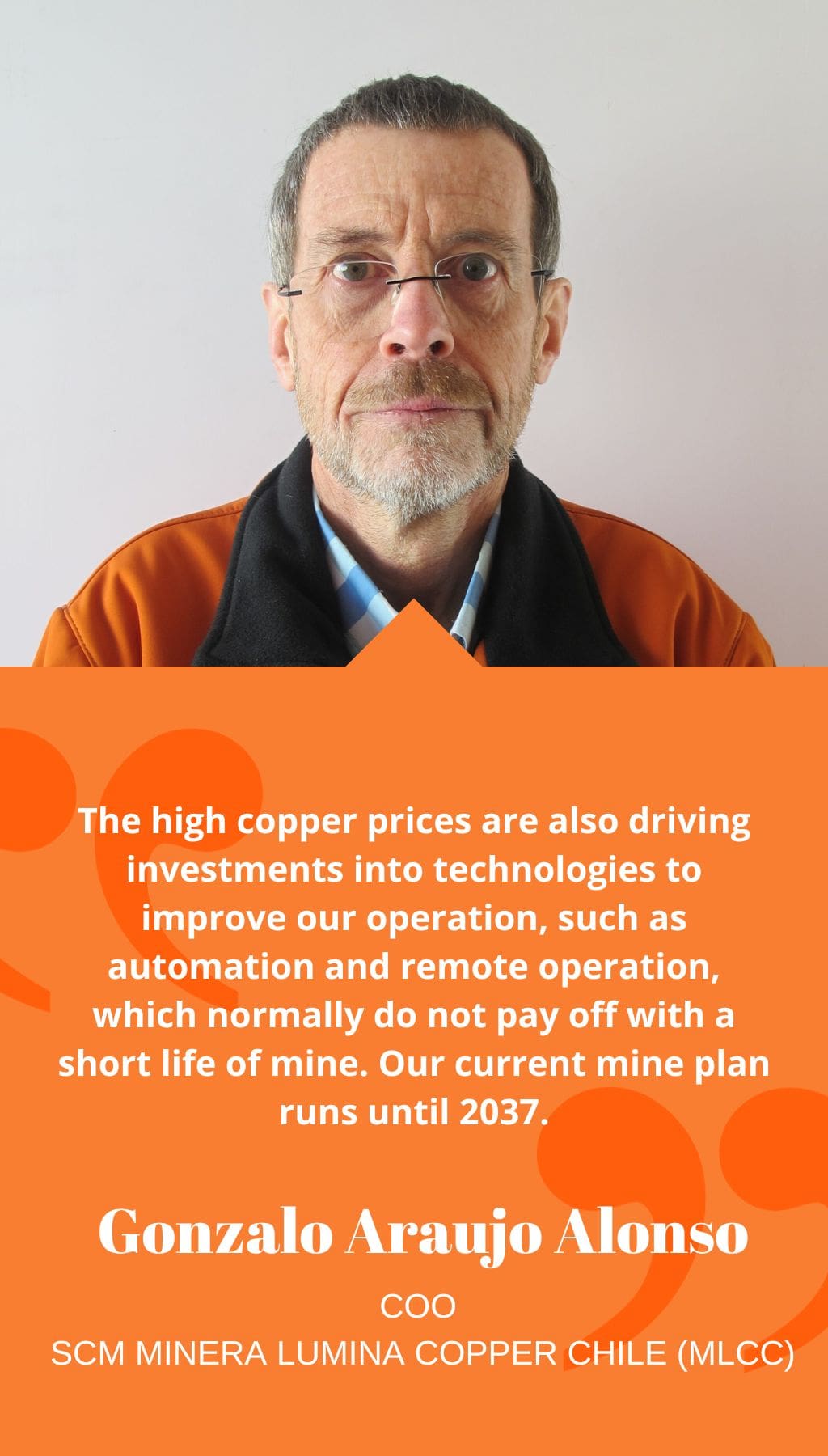
- Chile | 9 March 2022

Could you please give us an overview of SCM Minera Lumina Copper Chile’s (MLCC) Caserones mine?
Caserones is an open pit mine situated 162 km southeast of Copiapó at an average altitude of 4,300 m above sea level. MLCC operates two lines of production in the mine – a concentrator where we process sulfides to generate copper and molybdenum concentrate, and a dump leach operation where run of mine material is leached. Through an SX-EW process, we produce high-grade copper cathodes. For 2022, we aim to produce a total of 150,000 tons of copper, mostly in concentrate, with approximately 20,000 tons of cathodes.
I consider Caserones a significant learning opportunity for medium-sized mines and an excellent example of how to implement technologies and best practices to make a challenging project successful and profitable.
From an operational standpoint, what have been the main milestones achieved and the primary challenges faced by MLCC in the past two years?
In the previous years, MLCC observed significant improvements in production, leading to 2019 being our best year for production ever. However, this trend changed with the onset of the pandemic when we initiated an organizational adjustment strategy to mitigate challenges. We implemented several measures and changes in our operations to maintain production while safeguarding the health of our workers. We were successful in our strategy, but our production improvement curve was delayed. Presently, we are returning to more regular conditions and increasing reliability and production. We have had great results over the last three quarters and expect to continue on this trend moving forward.
What potential does the company see to expand the operation?
Currently, MLCC does not have any expansion plans for new lines of production or increasing the capacity of the concentrator. However, we have been conducting exploration campaigns every two or three years, mainly around the current pit, and expect to increase the mine’s life by several more years, primarily due to the high copper prices that allow for lower grade materials to be included in the mine plan. The high copper prices are also driving investments into technologies to improve our operation, such as automation and remote operation, which normally do not pay off with a short life of mine. Our current mine plan runs until 2037.
Lumina Copper was previously ordered to rectify environmental damages by Chile’s environmental regulator, the SMA. How has this been resolved?
In 2019, the SMA filed 18 charges against MLCC, of which 16 did not include the concept of environmental damages. These 16 charges are being addressed through a compliance program that we agreed on in early 2021. Currently, we have achieved all the targets and have 100% compliance with all the commitments of the plan. The program includes a robust monitoring system for water quality, delivering desalinated water at the Malpaso channel in Tierra Amarilla and at the city of Caldera to counter the deficit with the farmers and communities in the region. Furthermore, an environmental impact study is underway to regularize the infiltration control system in one of our tailings deposits.
There are two charges where the SMA considers that we caused environmental damage. However, we do not agree with these charges and believe that what happened was just a very limited increase in sulfide in the aquifer within our property over a distance of a couple of kilometers in an aquifer which is over 50 km long. We filed our discharge, and depending on the SMA’s decision, we will evaluate what to do next.














